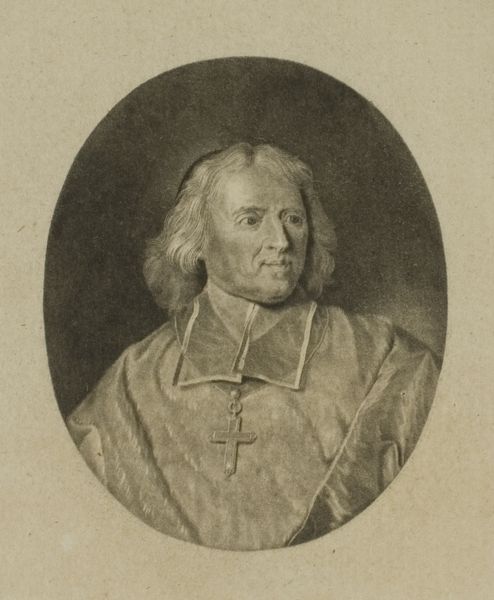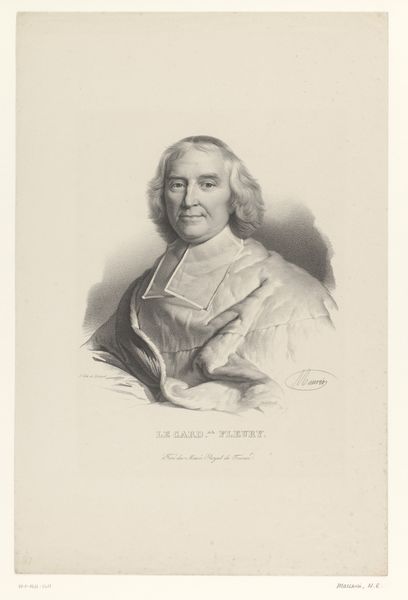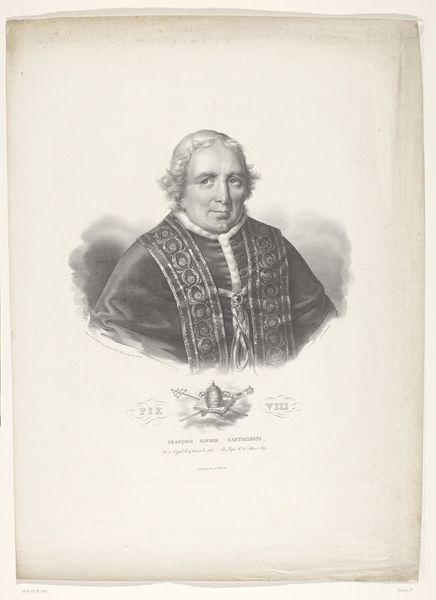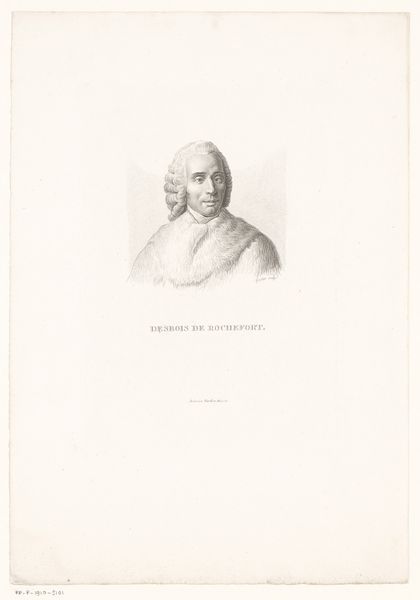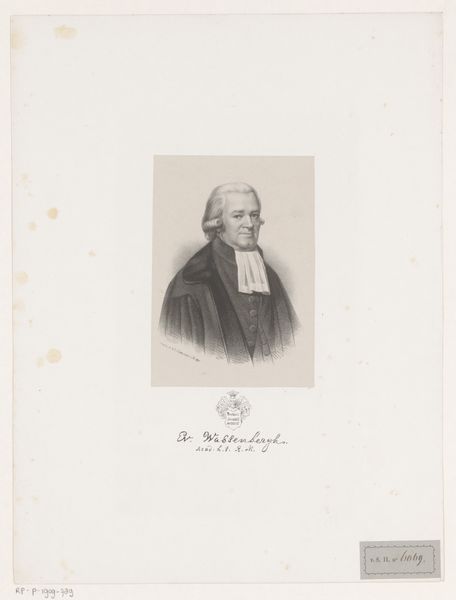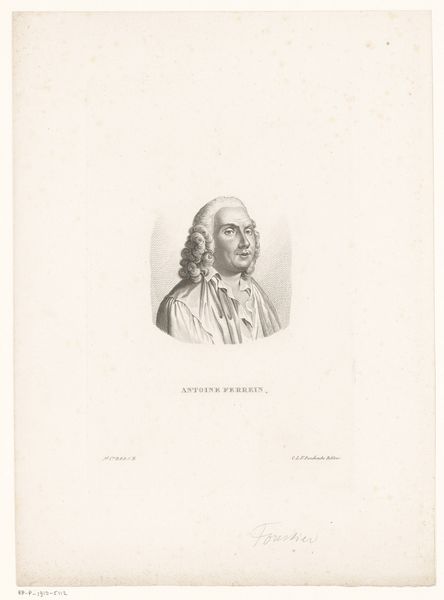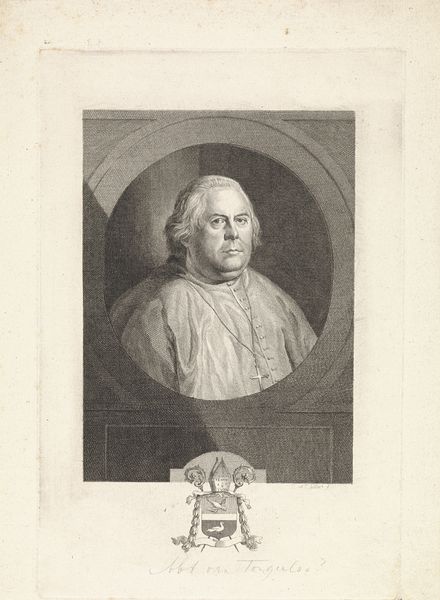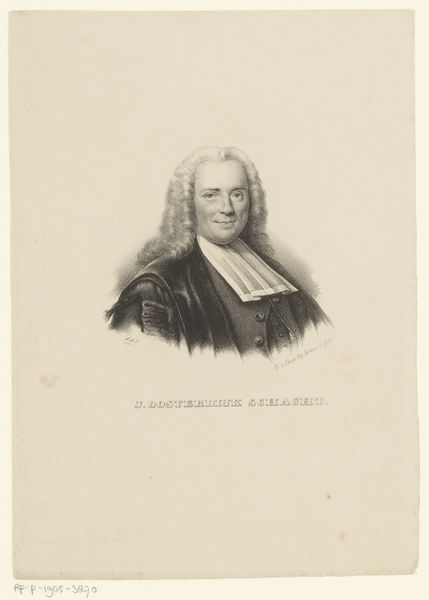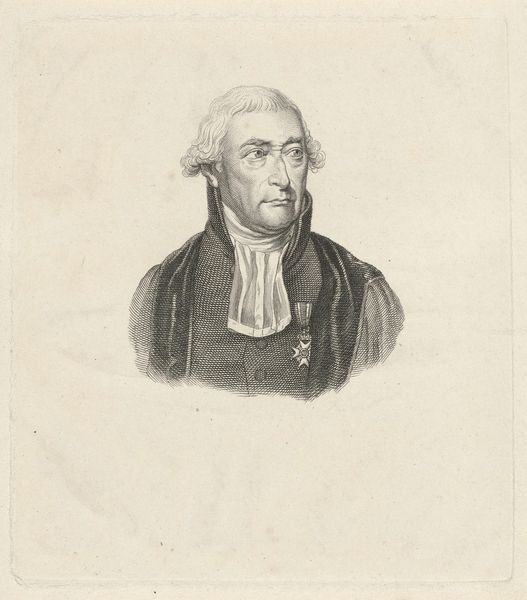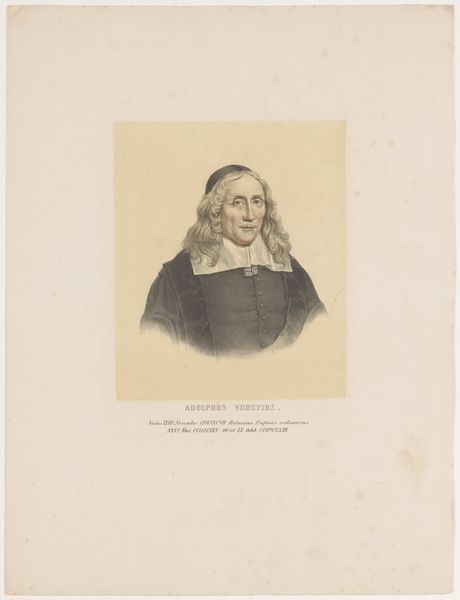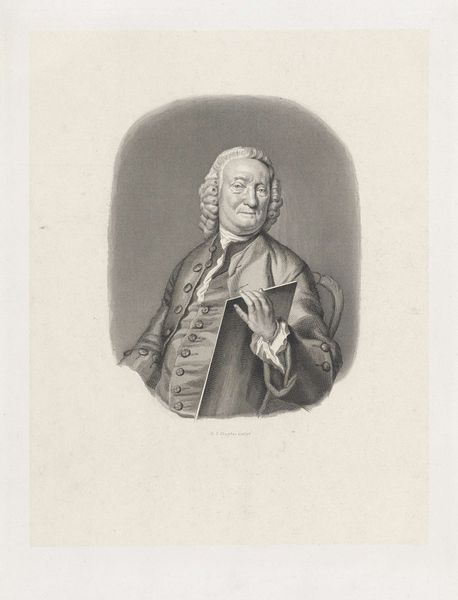
drawing, pencil
#
portrait
#
pencil drawn
#
drawing
#
neoclacissism
#
light pencil work
#
pencil sketch
#
pencil drawing
#
pencil
Dimensions: height 481 mm, width 317 mm
Copyright: Rijks Museum: Open Domain
Curator: Here we have Henri Grevedon’s 1824 portrait of Jacques-Bénigne Bossuet, rendered in pencil. Editor: My first impression is one of restrained power, somehow. The delicate medium belies the subject's apparent stature and authority. Curator: Yes, pencil work, especially in this era, carried a certain…directness. A stark contrast to the elaborate oil paintings one might expect for someone of Bossuet’s standing. Consider the cultural weight of representing such a prominent figure with these humble means. Editor: I’m curious about the production itself. Was this pencil portrait intended as a study for a larger work, perhaps a print destined for wider circulation? Or was it a statement about accessibility in representation? What type of pencils did he use, and how might the paper's preparation have impacted the final image? Curator: Intriguing. Bossuet, Bishop of Meaux, was a towering figure, a preacher and intellectual at the heart of Louis XIV’s court. Grevedon presents him frontally, his gaze unwavering, which is symbolic of his unshakeable conviction. Notice the slight upward tilt of his head - subtle signifiers of confidence and perhaps a touch of noble arrogance. Editor: And consider the economics of artmaking in this period. Was this portrait commissioned, and if so, what implications did that have on the final outcome? It's quite restrained, focusing more on Bossuet’s expression rather than elaborate details. Were those details secondary concerns when focusing on producing likeness quickly and efficiently? Curator: Exactly, the details we don't see are as telling as those we do. It invites reflection on how power is perceived and presented. And notice how Bossuet’s simple cross shines against the relative bareness of his clothing and surroundings. The icon of faith anchors him, and it emphasizes his commitment to spiritual concerns above worldly displays. Editor: This piece definitely offers a look into art making itself and who had access to that practice. The Neoclassical style suggests not just an aesthetic choice but an economical one too! I keep looking for hints about labor behind the artwork as much as behind the sitter. Curator: Indeed. It’s a compelling reminder that even the most seemingly straightforward image holds layers of symbolic, and now we see material, significance. Editor: It has changed how I view not only this artwork but perhaps other works of this era that were sketched during a transitional time of immense change.
Comments
No comments
Be the first to comment and join the conversation on the ultimate creative platform.
